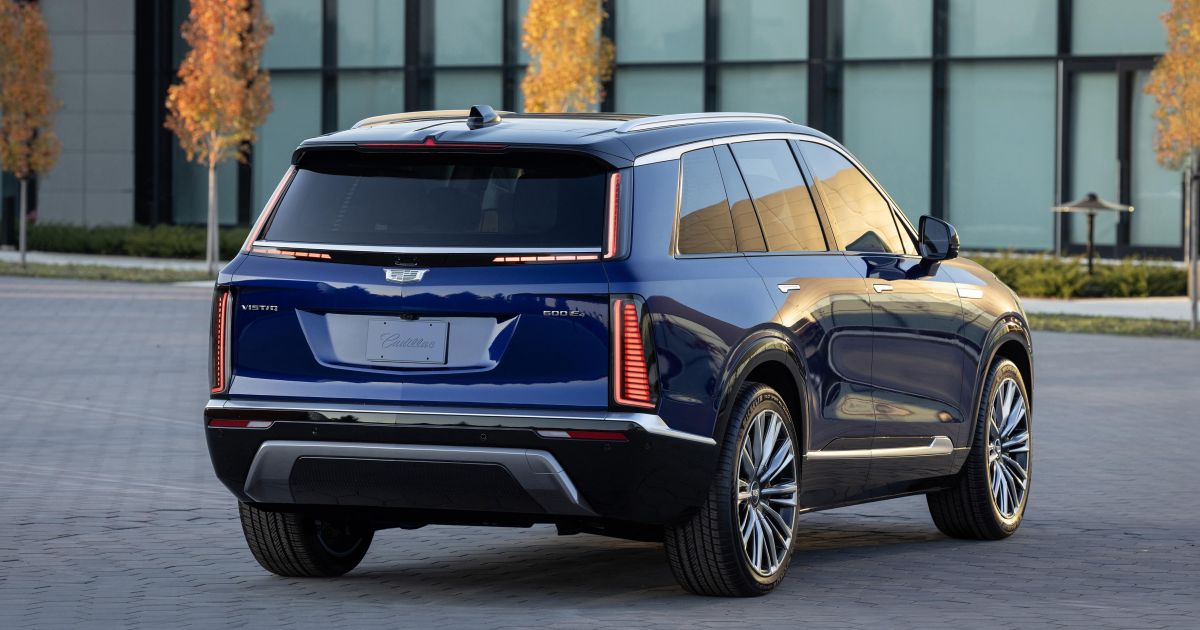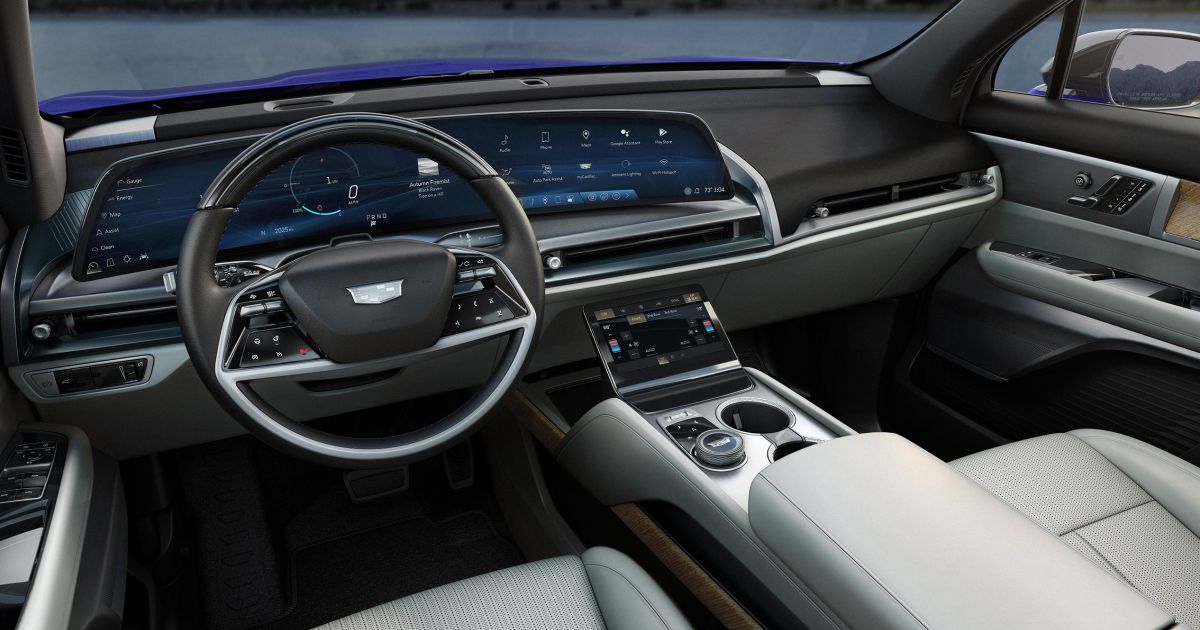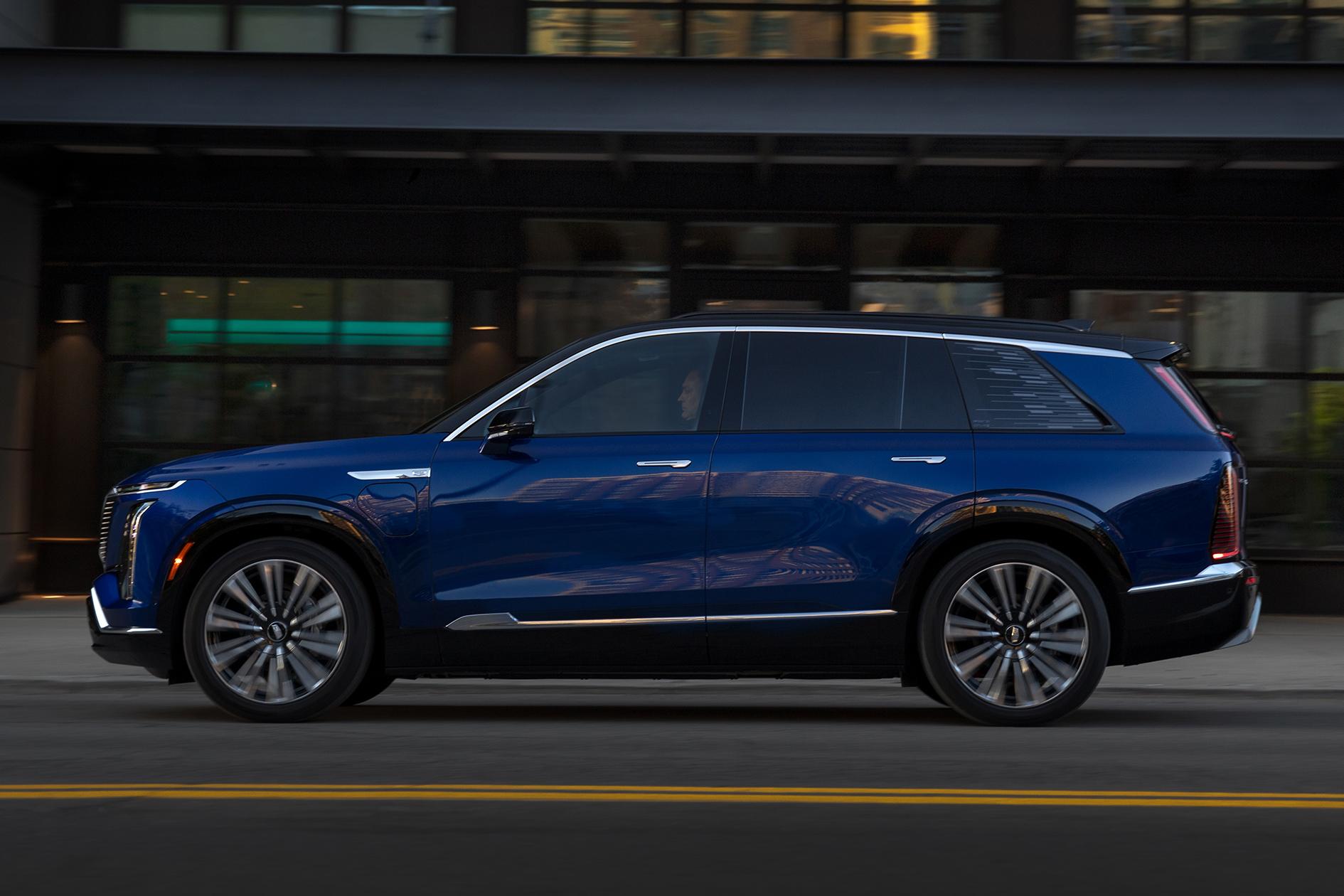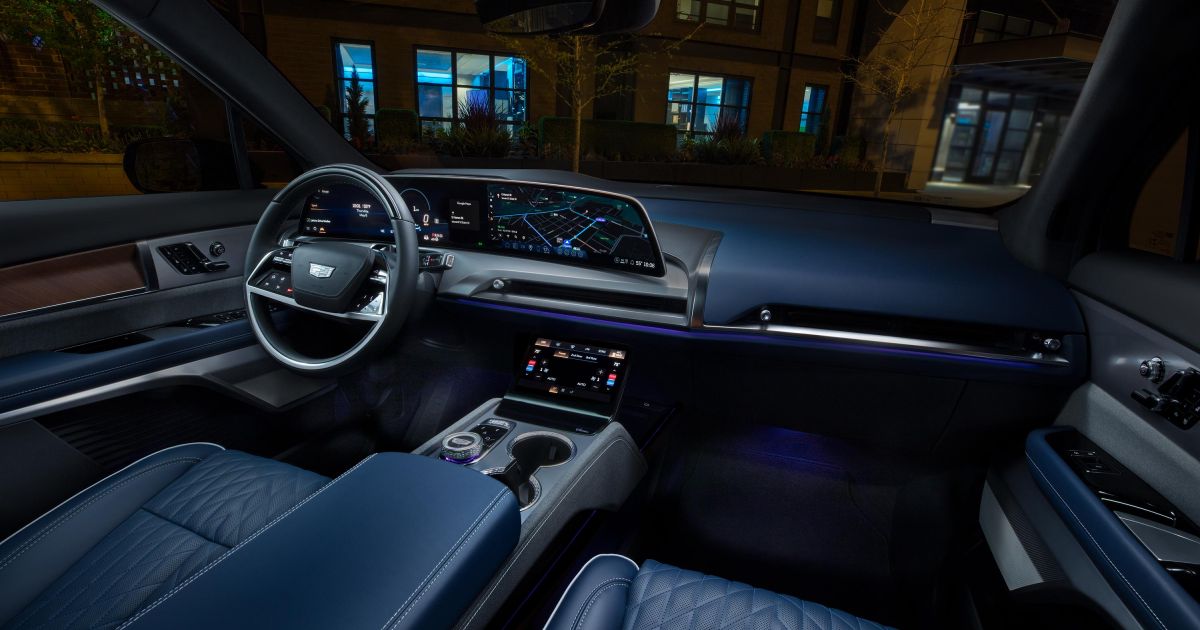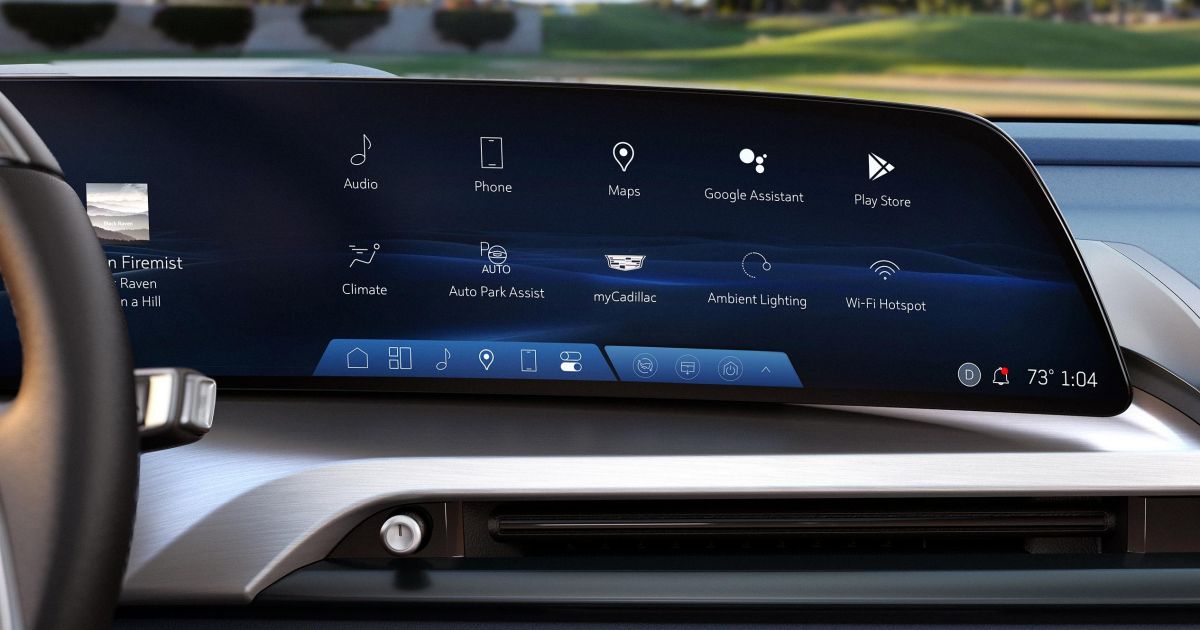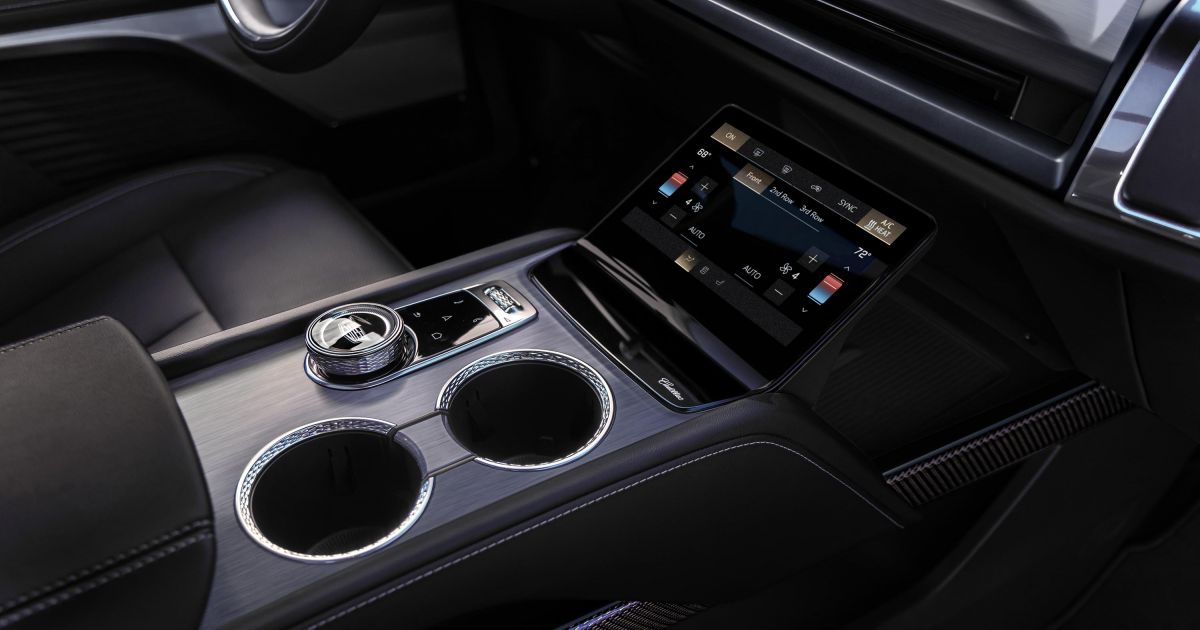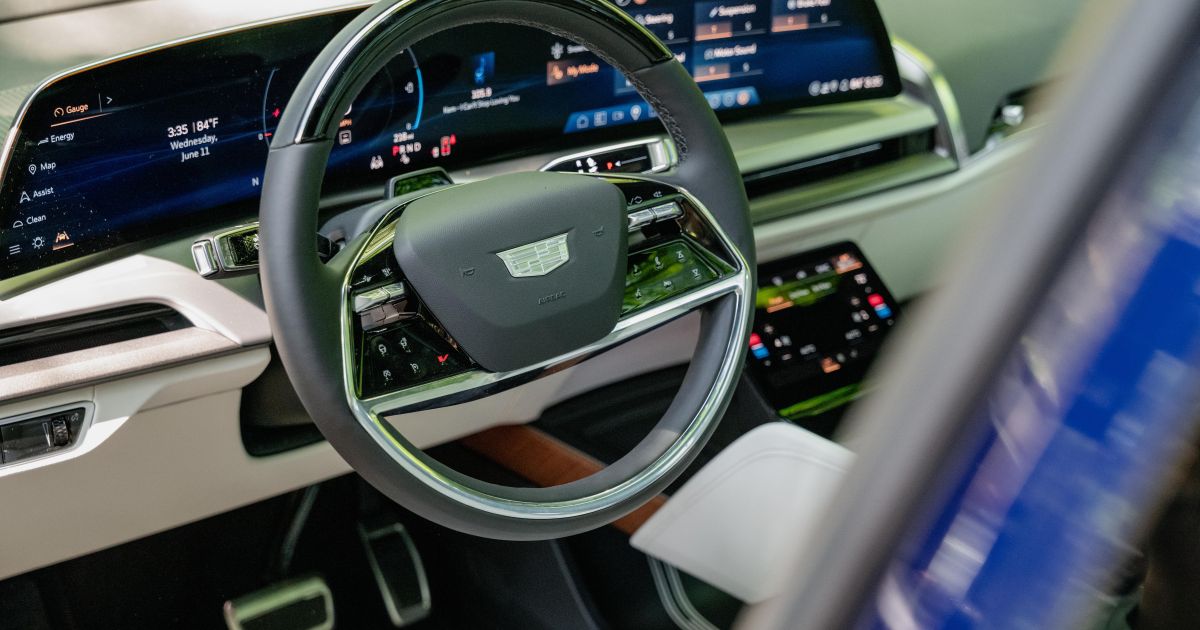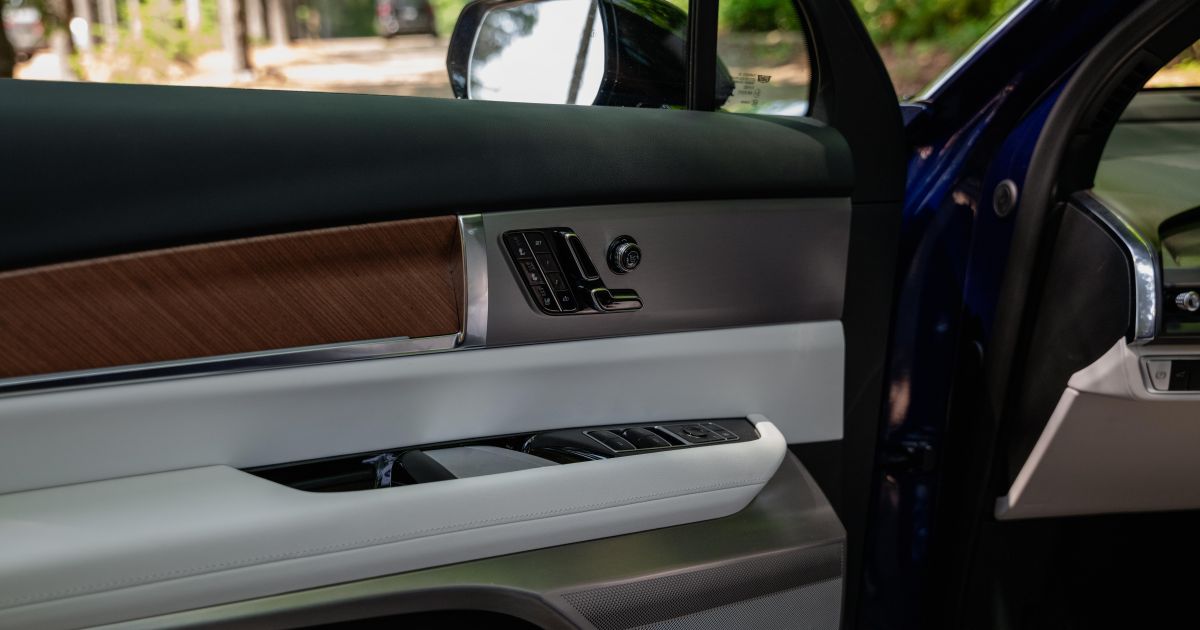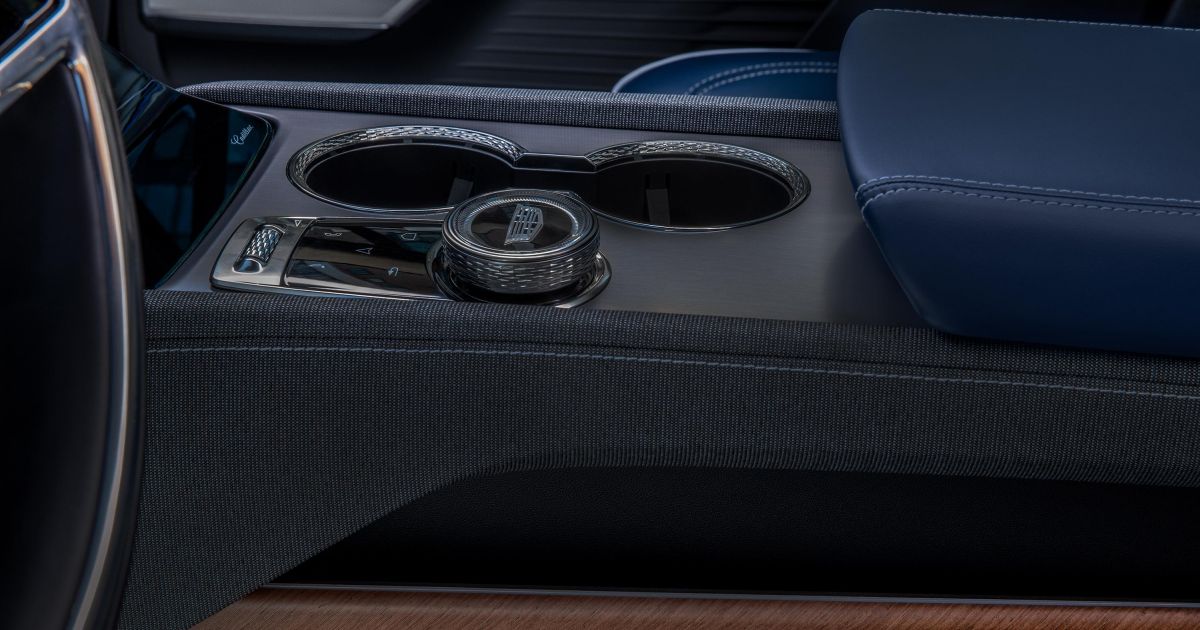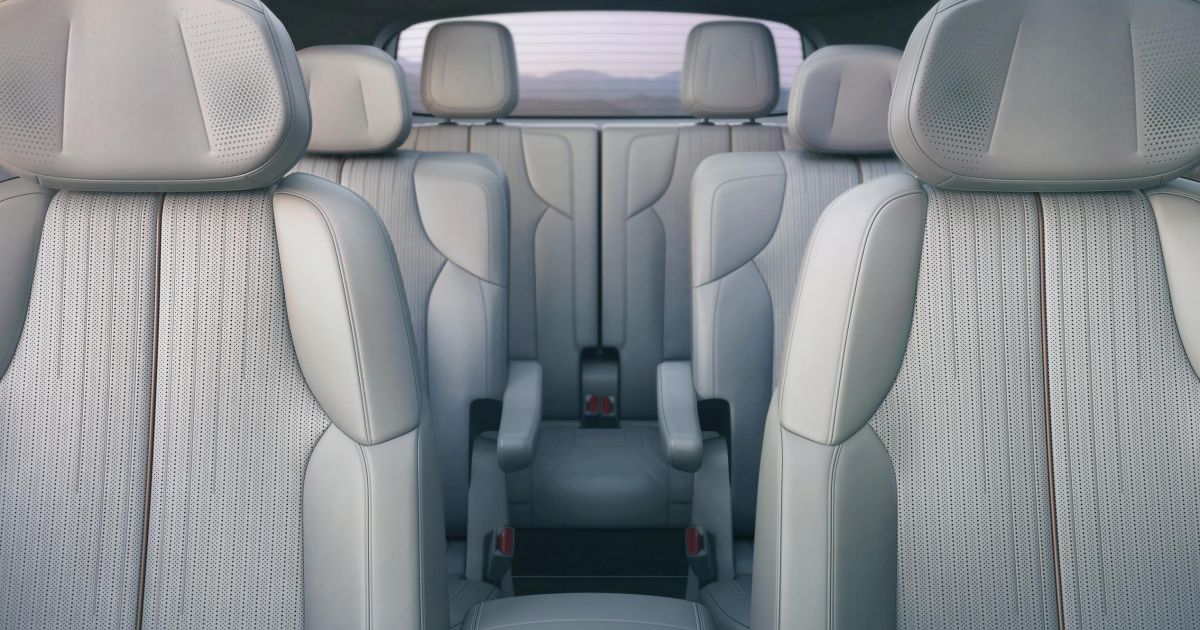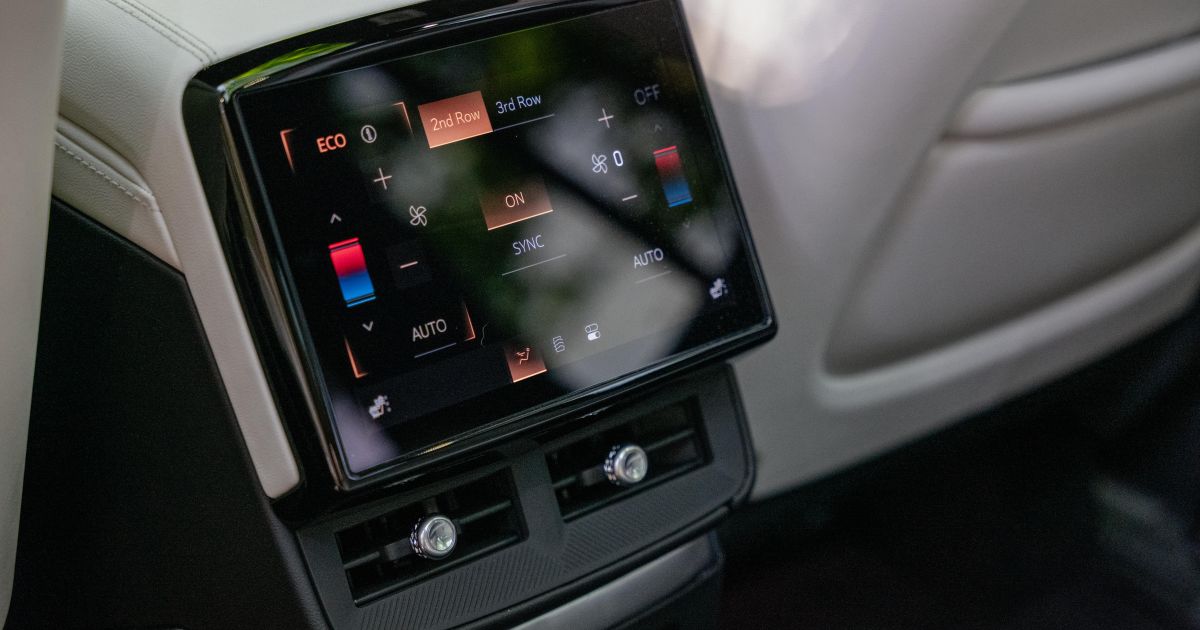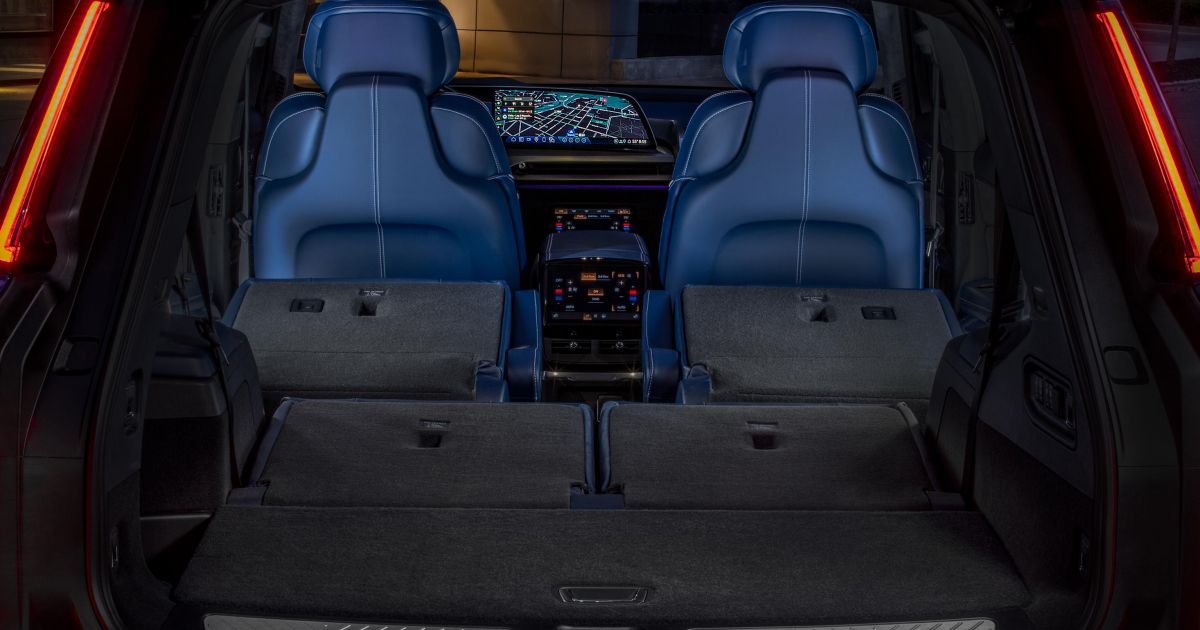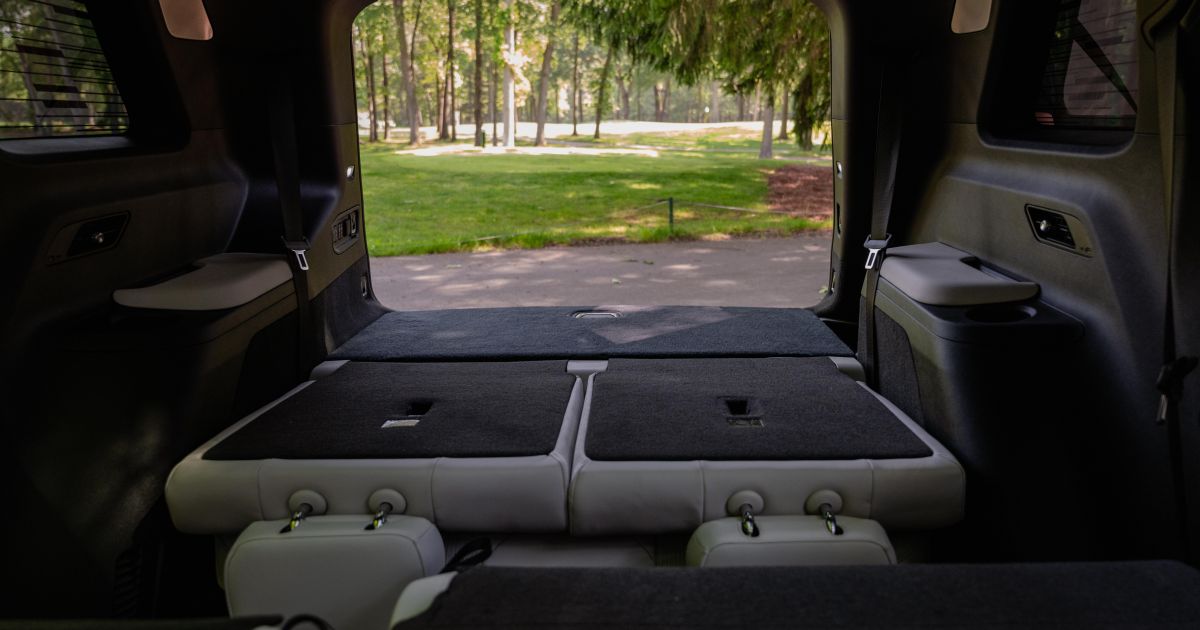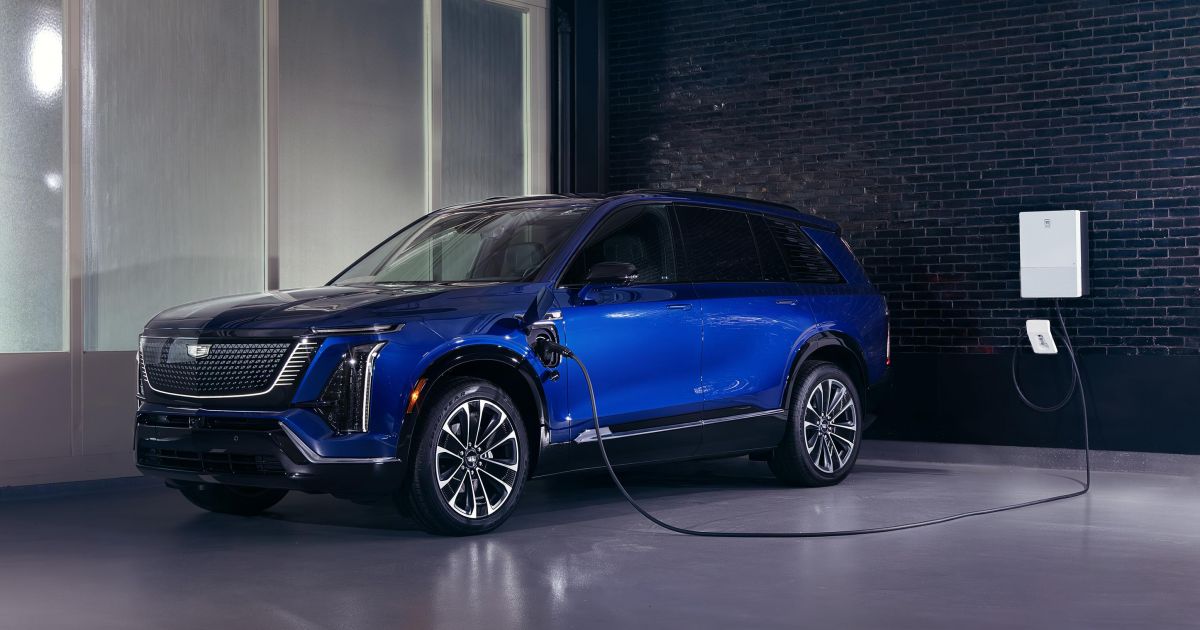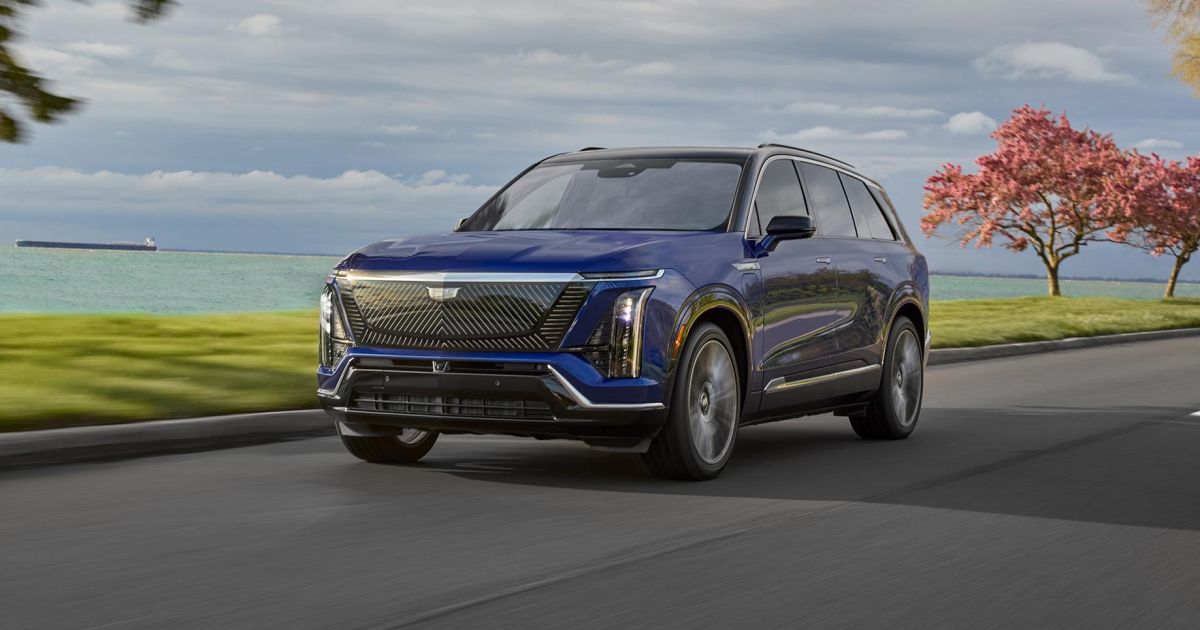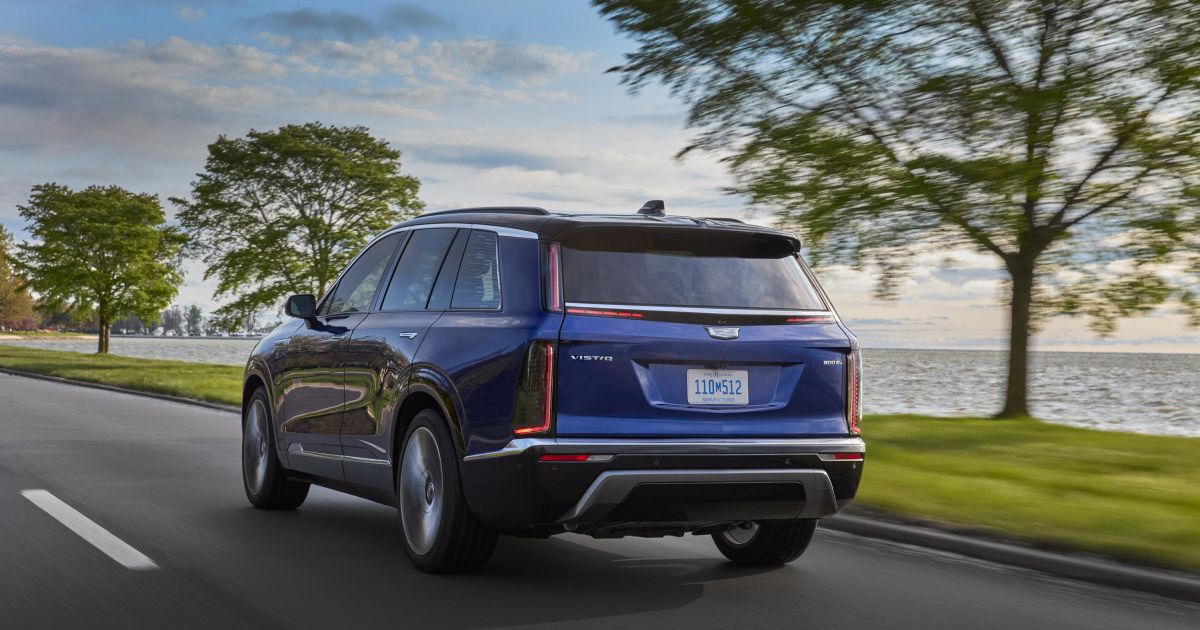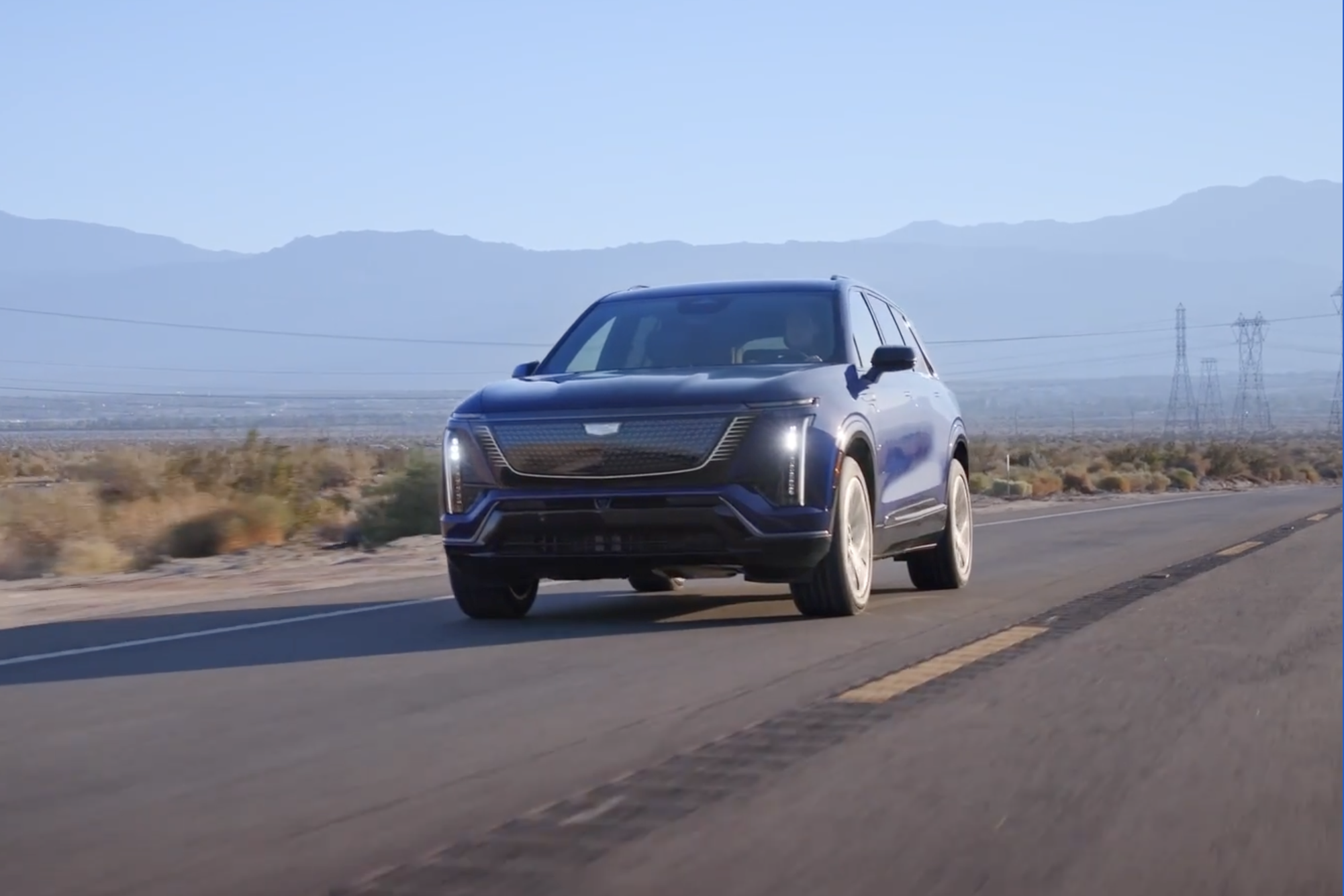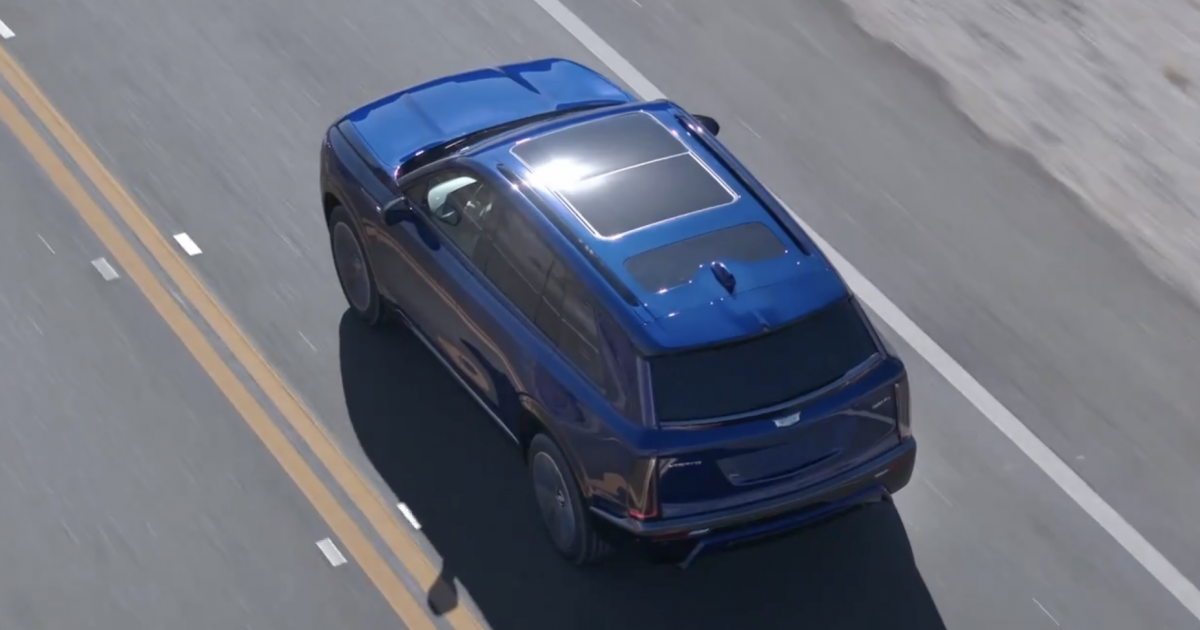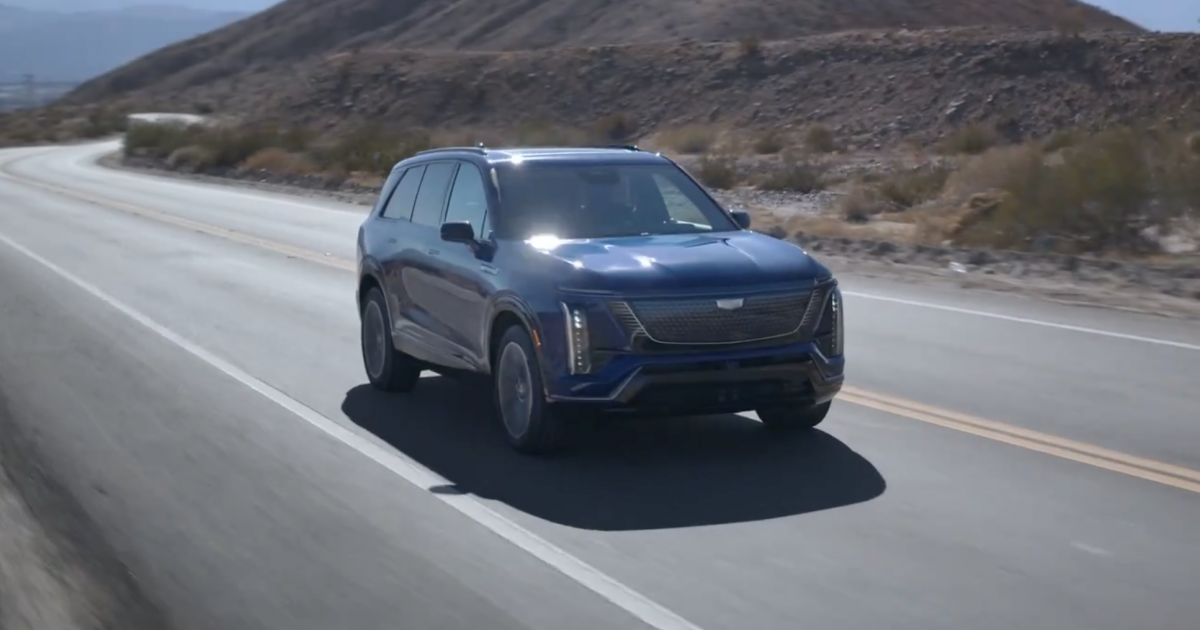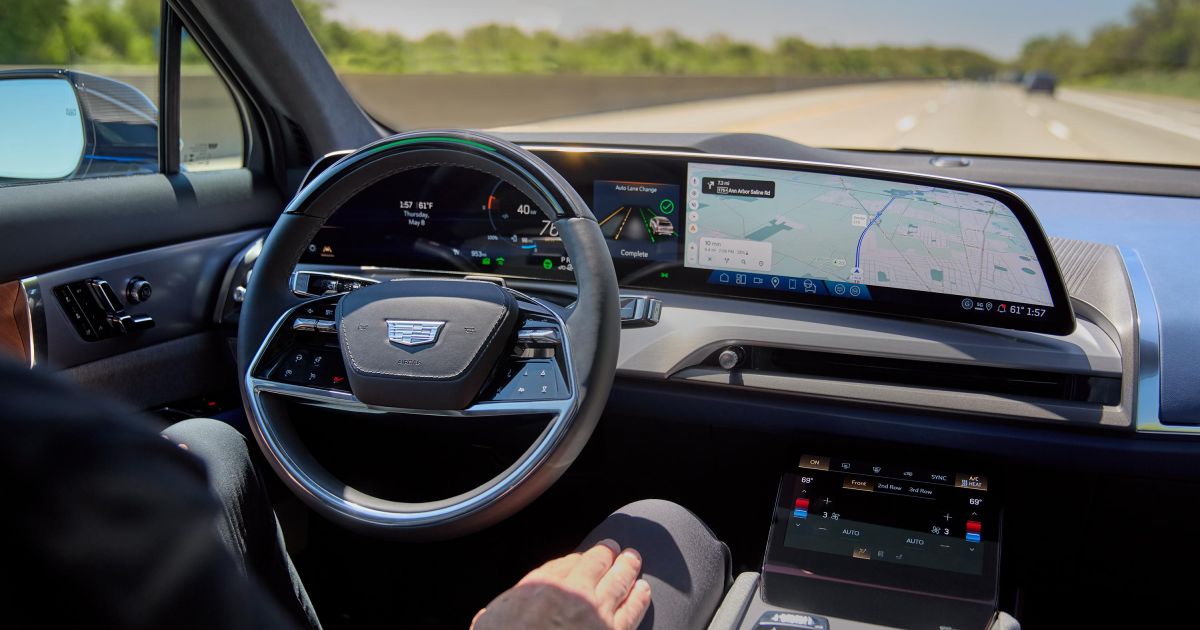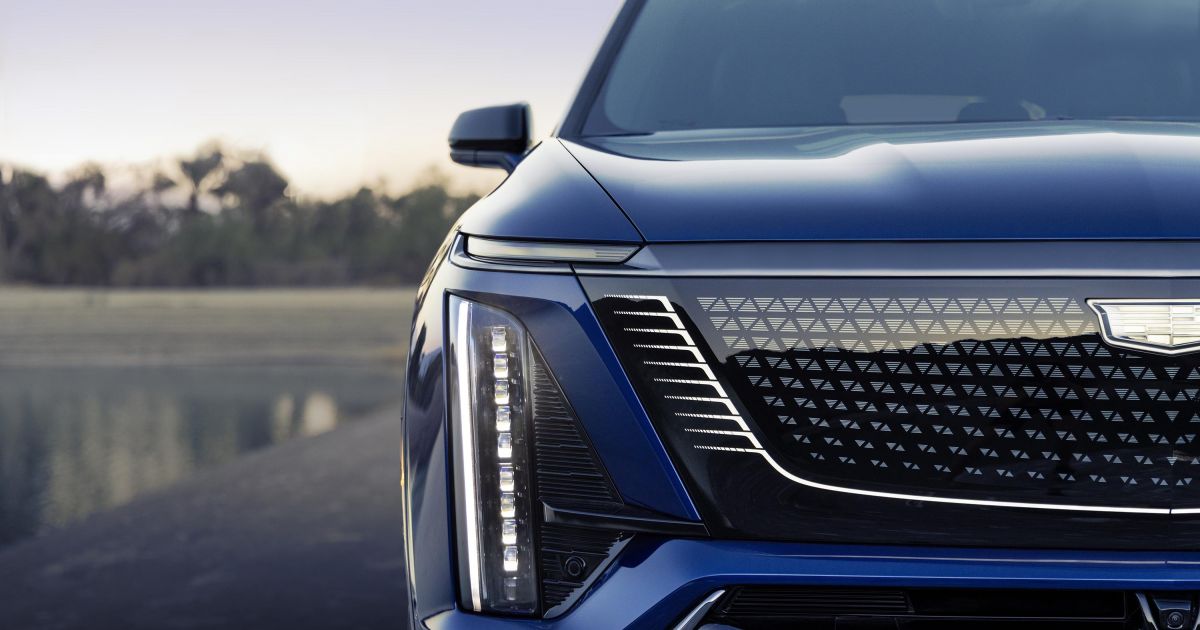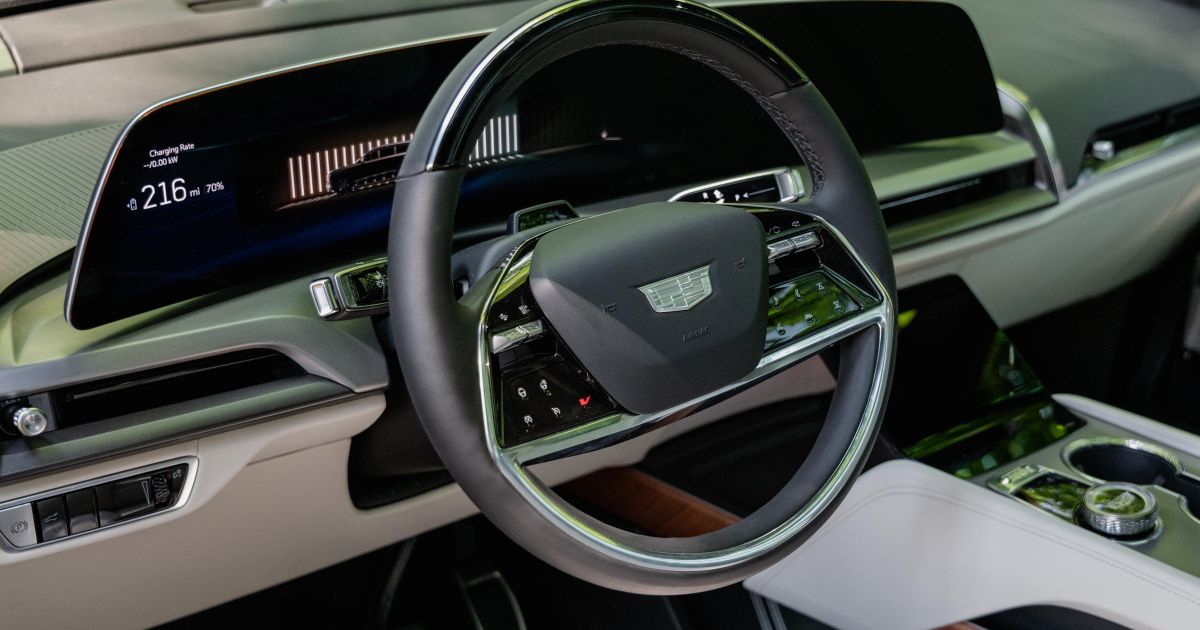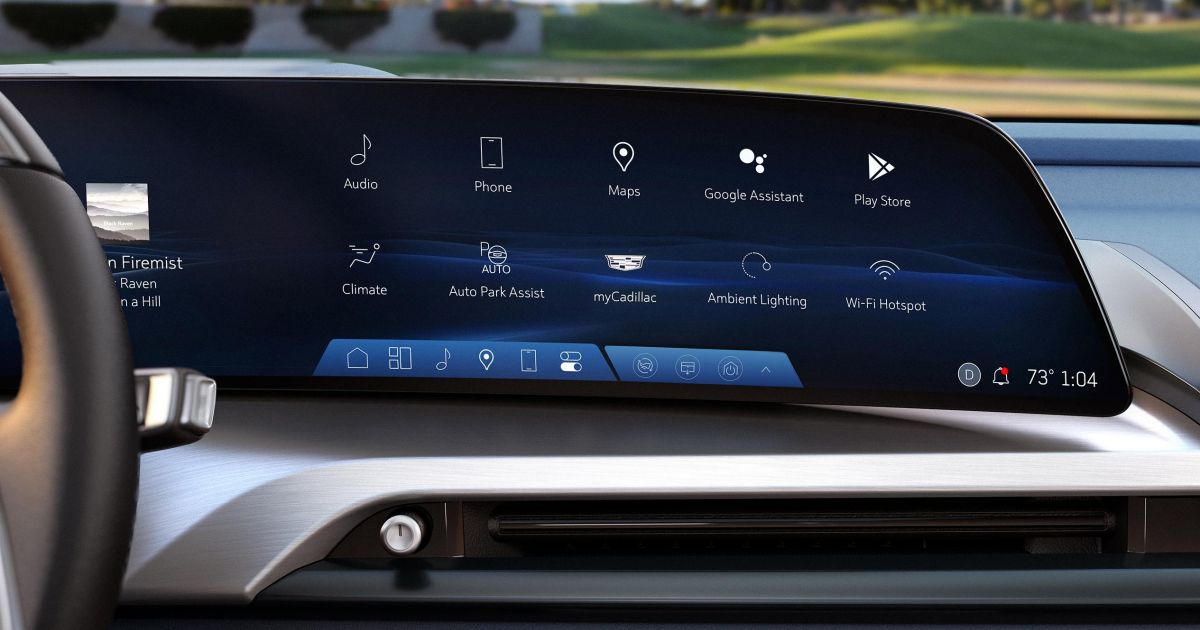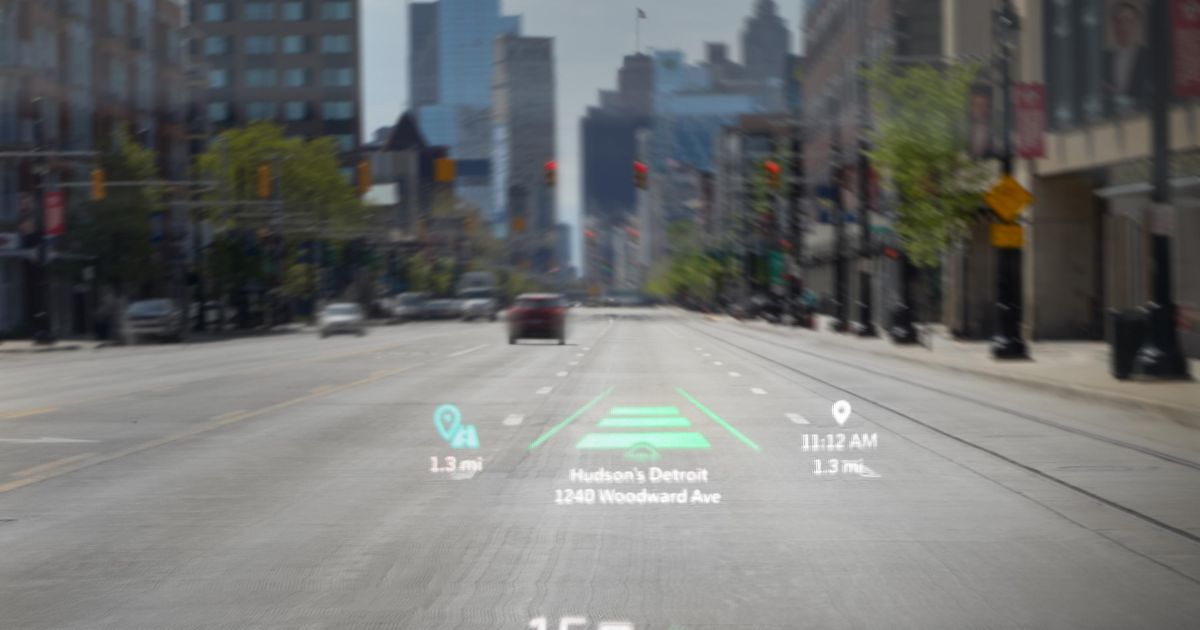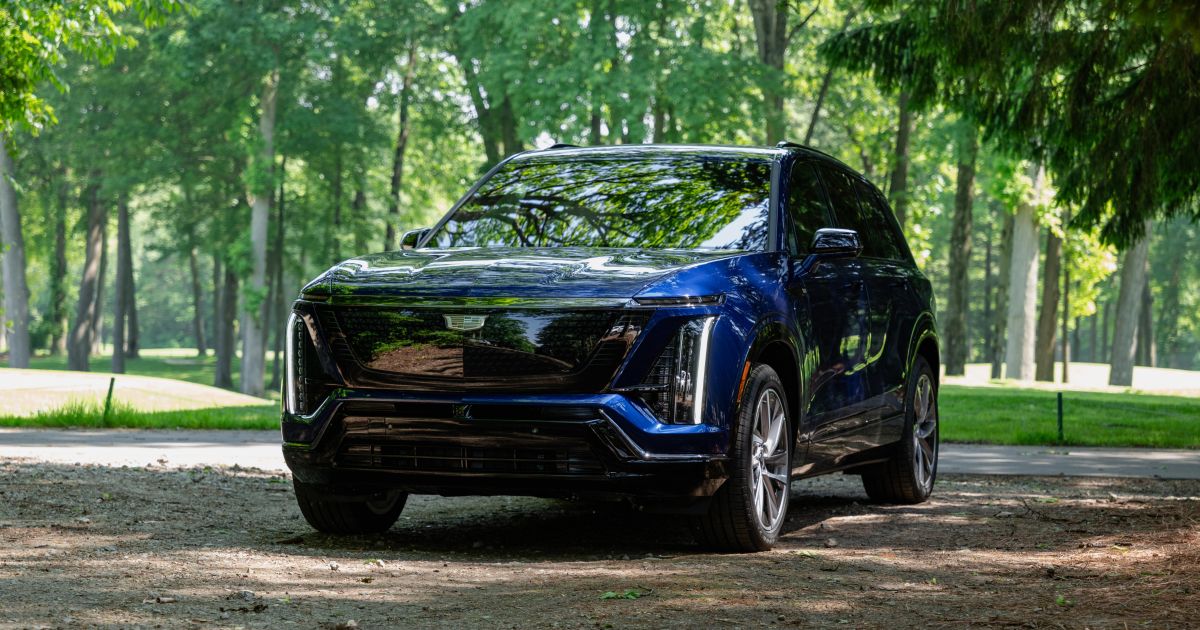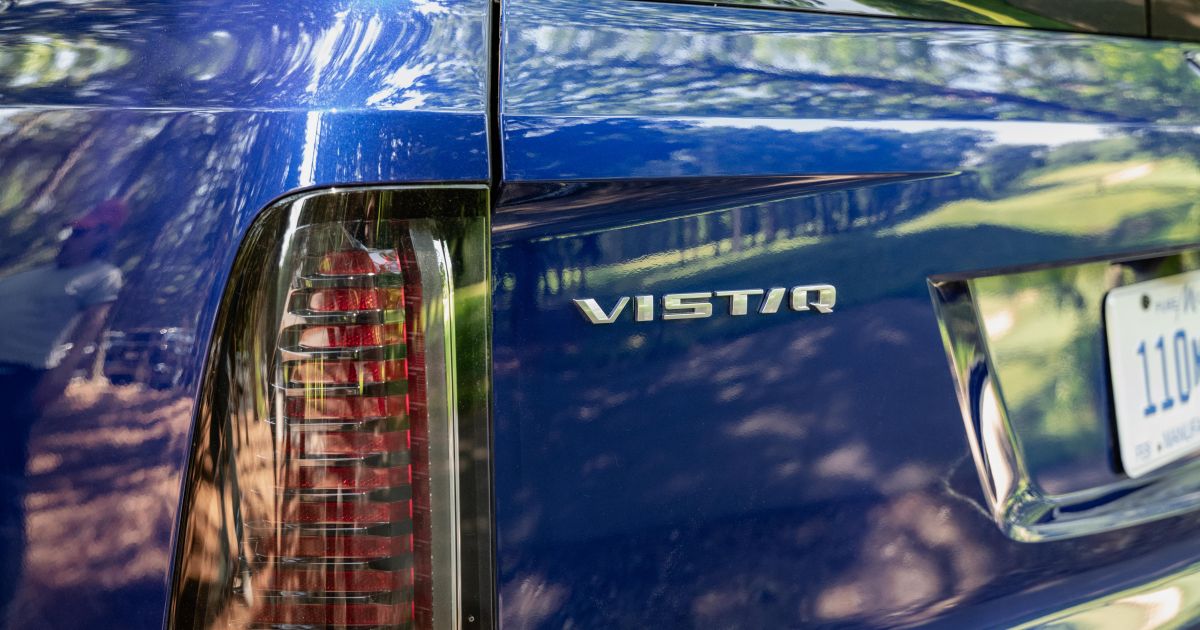Almost every luxury brand has an electric SUV nowadays, but these typically have two rows of seating.
The Cadillac Vistiq, in contrast, has seating for up to seven, which sees it rival the Volvo EX90, Mercedes-Benz EQS SUV and… well, not much else.
It’s closely related to the Lyriq, General Motors luxury brand’s debut product in Australia.
Cadillac explains it uses the same “upscale architecture” as that smaller, two-row SUV, with the two SUVs using a “different branch” of GM’s BEV3 dedicated electric vehicle (EV) platform.
To that end, the Vistiq and Lyriq share the same wheelbase, battery, and front and rear electric motors.
But the Vistiq stretches 217mm longer at 5222mm, or 185mm longer than an EX90.
Given the flagship, body-on-frame Escalade iQ and Escalade iQL aren’t coming to Australia, the Vistiq – which Cadillac executives are all too happy to hear referred to as a ‘baby Escalade’ – will be the brand’s flagship SUV in Australia.
It’s due here in 2026, part of a dramatically expanded Cadillac lineup that will also include a hotter V-Series version of the Lyriq, as well as the new entry-level Optiq crossover SUV.
All are electric, as Cadillac has committed to being an EV-only brand in Australia.
Even in its home market, Cadillac is focusing more on EVs than many other luxury brands. It’s phasing out its petrol-powered XT4 and XT6 crossovers there, with the XT5 likely to follow, leaving buyers with the similarly sized Optiq, Lyriq and Vistiq – plus the petrol-powered Escalade and electric Escalade iQ atop the range.
The good thing is Cadillac’s new electric crossover SUVs are much more impressive than its moribund petrol-powered ones. Not since the first-generation (2004-09) SRX has Cadillac offered a crossover SUV that can truly put the fight to rivals from BMW and Mercedes-Benz.
How much does the Cadillac Vistiq cost?
While Cadillac hasn’t announced pricing for the Vistiq in Australia, it has confirmed it will offer only up-spec variants featuring adaptive air suspension and a six-seat configuration with second-row captain’s chairs.
In the US, the Vistiq is offered in Luxury, Sport, Premium Luxury and Platinum trim levels, with prices ranging from $US79,090 to $US98,190 (~A$120,000-149,000). All feature a dual-motor all-wheel drive powertrain.
The most affordable all-wheel drive Lyriq is priced from US$63,590 (~A$97,000) in its home market. Here, it’s priced from $122,000.
To see how the Cadillac Vistiq stacks up against its rivals, use our comparison tool
What is the Cadillac Vistiq like on the inside?
Cadillac has done a terrific job giving each of its electric SUVs a unique feel inside, even if they may share key components.
The Vistiq, like the Optiq and Lyriq, has a 33-inch curved display. This comprises a digital instrument cluster and an infotainment touchscreen.
It also includes an additional touch panel between the steering wheel and the driver’s door that can be used to control the headlights, view trip information and change the instrument cluster layout.
But the Vistiq is alone among this trio in featuring an additional touchscreen used for the climate control, similar to screens you’ll find in Audi and Range Rover products.
While the Optiq and Lyriq’s row of physical climate control switches didn’t really need replacing, this screen does at least feature haptic feedback.
The centre console has a unique design too. Behind the climate touchscreen are a pair of wireless charging pads, while aft of it you’ll find a pair of cupholders and a rotary dial to control the infotainment system.
There’s a two-spoke steering wheel, which looks attractive but does occasionally feel weird in operation – “Which way is up?”
As with the Optiq and Lyriq, there are some eye-catching interior colourways available.
We drove a Premium Luxury, for example, which featured blue on the dashboard, seats and doors, with suede pillar and headliner trim, and beautiful wood inlays.
Modern Cadillac interiors often employ many different types of materials. By that, we don’t mean multiple types of black plastic trim with different graining, but rather mixtures of wood, leather, metal and plastic.
Some may find this style busy, but to my eyes the Vistiq’s interior feels appropriately posh with an elegant design and interesting material choices.
I like touches like the (admittedly Mercedes-Benz-like) seat controls on the doors, as well as the knurled metal volume wheel and infotainment dial and cupholder surrounds.
The latter sit near touch-capacitive shortcut buttons which you may accidentally “press” with your sleeve.
There are a few material and design choices I don’t care for. The bottoms of the doors are finished in hard plastic, though this is something we’ve also noticed in $200,000-plus Audis and $500,000-plus Porsches.
The hard plastic glove compartment lid feels a bit cheap, too, while the patterned trim on the top of the dashboard behind the curved screen results in major glare on the windscreen.
Everything feels generally well screwed together, mind you. If we’re nitpicking, the centre console bin lid is just a tad wobbly.
After unusually launching the Lyriq without a head-up display, a common feature among luxury brands and plenty of non-luxury ones too, the Vistiq features a dual-pane augmented reality head-up display.
Information like speed is displayed on one tier, with turn-by-turn directions on the other.
However, the Vistiq does without Android Auto and Apple CarPlay, both of which feature on the Lyriq.
General Motors has been moving away from this smartphone mirroring technology in its EVs, arguing its Android Automotive-based infotainment system gives you a raft of embedded Google apps and the opportunity to download more
The embedded Google Maps will helpfully tell you what your charge level will be at your destination, and suggest charging stops along your route. But after years of getting us used to smartphone mirroring apps, to drop them is a frustrating choice by GM.
Second-row occupants also get a touchscreen for adjusting climate settings, while other amenities include air vents, map pockets, a pair of USB-C outlets, and a 110V power outlet.
There’s plenty of room, and the floor is flat aft of the first-row seats. There’s the choice of a three-seat bench or individual captain’s chairs, the latter of which will be standard fitment in Australia.
With the captain’s chairs, you can easily scramble to the third row via the middle. Alternatively, there’s a button on each seat that sees it tilt and slide forward.
At 180cm tall, my knees were just touching the second-row seatbacks when I sat in the third row. However, someone my height in the second row was able to move their seat forward ever so slightly and still enjoy plenty of space, while also freeing up more for me.
I had plenty of headroom, with the fixed glass panel – which is available with a shade – actually providing me with more space for my noggin. Toe room wasn’t a problem either.
This makes the third row more spacious than, say, that of a Kia EV9. Amenities back here include air vents, cupholders and padded armrests on each side, as well as a pair of USB-C outlets.
Cadillac quotes 431 litres of boot space behind the third row, expanding to 1218L with the third row dropped and 2272L with the second and third rows dropped.
| Dimensions | Cadillac Vistiq |
|---|---|
| Length | 5222mm |
| Width | 2203mm (incl. mirrors) 2026mm (excl. mirrors) |
| Height | 1804mm |
| Wheelbase | 3094mm |
| Cargo capacity | 431-2272L |
To see how the Cadillac Vistiq stacks up against its rivals, use our comparison tool
What’s under the bonnet?
There’s just one powertrain available in the Vistiq.
| Specifications | Cadillac Vistiq |
|---|---|
| Drivetrain | Dual electric motors |
| Battery capacity | 102kWh (useable) |
| Battery type | Nickel manganese cobalt aluminium (NCMA) |
| Power | 459kW |
| Torque | 880Nm |
| Drive type | All-wheel drive |
| 0-60mph (0-96km/h) time (claimed) | 3.7 seconds with Velocity Max |
| Weight (tare) | 2899kg |
| Energy consumption (claimed) | 21.8kWh/100km (WLTP) |
| Energy consumption (as tested) | 22.2-28.2kWh/100km |
| Claimed range | 460km (WLTP) |
| Max AC charge rate | 11.5kW (standard) or 19.2kW (optional) |
| Max DC charge rate | 190kW |
Cadillac publishes two different range figures for the Vistiq in the US, both based on the US Environmental Protection Agency (EPA) test cycle. It has 491km of range, dropping to 483km when equipped with the optional 19.2kW onboard charger.
It separately advertises a 460km figure under the WLTP test cycle in Europe.
The European-market Vistiq is advertised as having a 91kWh NCMA battery, while the US-market Vistiq has a 102kWh capacity. Powertrain specifications are otherwise the same.
To see how the Cadillac Vistiq stacks up against its rivals, use our comparison tool
How does the Cadillac Vistiq drive?
The Vistiq features multi-link front and five-link rear suspension with semi-active Chassis Damping Control dampers as standard.
Unlike the smaller Optiq and Lyriq, the Vistiq can be had with air suspension – something which typically promises a plusher feel.
You don’t need to step up to an air-suspended Vistiq, however, to enjoy a comfortable ride.
A caveat here: we’ll get the export chassis tune in Australia and not the American one we tested. Cadillac says export markets like Europe and Australia expect a sportier though not harsh or aggressive feel.
“[There’s] not much of a difference. A lot of it’s on-centre steering feel… and on-centre damper control,” lead development engineer Drew Mitchell told CarExpert.
“The way we calibrate damper current and firmness… We try to give you a little bit more on-centre stiffness, help a little bit with some of that motion control, so it’s going to feel in the American variant a little softer.”
We had a relatively limited test route along mostly suburban roads, though I was able to take a detour or two to drive the Vistiq across some unsealed roads.
First, we drove a Premium Luxury riding on huge 23-inch alloy wheels and fitted with air suspension.
It didn’t quite smother train tracks, but it gobbled up some rather jagged Michigan roads. It also settled quickly over rises, though we didn’t find too many undulating roads along our route.
Driving Vistiqs back to back, we found those with air suspension had a touch more float but didn’t feel barge-like by any means. Still, Cadillac says the standard suspension offers a sportier feel, though it’s still very comfortable.
The Vistiq has a similarly classy feel to the Lyriq over the road, and this extends beyond a plush ride.
The propulsion sound is subdued, and throttle response is smooth and progressive; Cadillac says it worked hard on what’s called ‘lash controlling’, with the aim of limiting the jerky feeling you get with some high-performance EVs.
As a result, the Vistiq won’t rock you back in your seat, so if you want thrills like that you’ll likely have to wait for a Vistiq-V… if Cadillac decides to build one.
You can press a red V button on the steering wheel to engage Velocity Max mode and give you quicker acceleration. This isn’t tied to a drive mode setting, and pushing it changes only the pedal response, giving you maximum power and torque albeit while depleting the battery quicker.
There are Tour, Sport and Snow/Ice drive modes selectable via an anchored bar at the bottom of the touchscreen, with a custom My Mode allowing you to adjust settings for the steering, brakes, suspension, acceleration, and motor sound.
We mostly drove in Tour mode, and the Vistiq has light, manageable steering at low speeds. It’s not completely vacant, mind you, but flicking the Vistiq over to Sport mode doesn’t do much to change the steering weighting and feel.
Making the Vistiq more nimble is available rear-wheel steering. This sees the rear wheels turn in the the opposite direction of the front wheels, up to 3.5 degrees, at low speeds to improve maneuverability; at higher speeds, they turn with the front wheels to improve control.
Cadillac is planning to offer a ‘Stealth’ sound, getting rid of the artificial propulsion sound. But the regular sound is hardly obtrusive, and the Vistiq is blessed with a serene cabin. Very little wind noise makes its way in.
As with the Lyriq, Cadillac has included a ‘regen on demand’ paddle behind the steering wheel that effectively allows you to brake the vehicle without putting your foot on the brake pedal. You can also activate a typical one-pedal driving mode.
We saw energy consumption of between 22.2kWh/100km and 28.2kWh/100km, though again we must note this was a limited test route.
The Vistiq comes standard in the US with Super Cruise, allowing for hands-free driving across over a million kilometres of roads in North America – typically divided highways. This feature is unlikely to come here.
While GM vehicles equipped with Super Cruise haven’t offered a lane-centring function for use on roads on which the system doesn’t function, the automaker is introducing what it calls hands-on centring assist on certain vehicles for 2026.
It’s unclear if we’ll get this feature in Australia; we should hope so, given how unusual it is that the Lyriq lacks such a feature in our market.
To see how the Cadillac Vistiq stacks up against its rivals, use our comparison tool
What do you get?
Cadillac hasn’t confirmed precisely what the local Vistiq lineup will look like, but it has confirmed it’ll only offer high-end trims. In the US it’s offered in four different trim levels, and we’d expect only the top two to be offered here.
2025 Cadillac Vistiq Luxury equipment highlights:
- 21-inch alloy wheels
- Continuous Damping Control
- Vehicle-to-home (V2H) functionality
- 19.2kW onboard charger
- LED headlights with LED cornering lights
- Illuminated front grille and badge
- Illuminated door handles
- Heated, power-folding exterior mirrors with driver’s auto-dimming
- Rain-sensing wipers
- Panoramic sunroof
- Power tailgate
- Privacy glass
- Remote start
- 7-seat configuration
- 33-inch curved display
- Digital rear-view mirror
- Power-adjustable front seats
- Heating
- Ventilation
- Massage
- Driver’s memory and power lumbar
- Heated second-row seats
- Heated steering wheel
- Power tilt and telescoping steering column
- Five-zone climate control
- Active Noise Cancellation
- AKG 23-speaker sound system with Dolby Atmos
- Wireless phone charging
- Illuminated front door sill plates
- Ambient lighting
- Alloy pedals
The Sport features darker exterior elements.
The Premium Luxury adds:
- 22-inch alloy wheels
- Adaptive air suspension
- Active Rear Steering
- 6-seat configuration with second-row captain’s chairs
- Front passenger seat memory
- Augmented reality head-up display
- Night Vision
- Sueded microfibre headliner
The Platinum adds:
- Black roof
- Brembo front brakes
- Body-colour wheel arch mouldings
To see how the Cadillac Vistiq stacks up against its rivals, use our comparison tool
Is the Cadillac Vistiq safe?
The Cadillac Vistiq has yet to be tested by ANCAP or Euro NCAP, or American safety authorities such as the Insurance Institute for Highway Safety (IIHS).
Standard safety equipment across the range includes:
- Autonomous emergency braking (AEB)
- Intersection assist
- Pedestrian and cyclist detection
- Reverse AEB
- Blind-spot assist
- Driver attention monitoring
- Rear cross-traffic assist
- Safe exit warning
- Surround-view camera
- Traffic sign recognition
- Super Cruise
- 8 airbags
To see how the Cadillac Vistiq stacks up against its rivals, use our comparison tool
How much does the Cadillac Vistiq cost to run?
Cadillac Australia hasn’t released local servicing and warranty information for the Vistiq. However, the Lyriq is currently backed by a five-year, unlimited-kilometre vehicle warranty and an eight-year, 160,000km battery warranty.
The Lyriq also comes with five years of free roadside assistance and free scheduled servicing, with visits to a service location required every 12 months or 12,000km.
To see how the Cadillac Vistiq stacks up against its rivals, use our comparison tool
CarExpert’s Take on the Cadillac Vistiq
While most luxury brands have been focusing on large, two-row electric SUVs, Cadillac has developed a three-row SUV that offers spacious and comfortable accommodation across all three rows.
It might share much with the Lyriq, but Cadillac has also given the Vistiq a significantly different visual identity inside and out. Cadillac’s new EVs all have a classy look and feel inside out, and the Vistiq builds on the Lyriq base with new features like rear-wheel steering, air suspension, Night Vision, and a head-up display… though the removal of smartphone mirroring grates.
There are some question marks here. We don’t yet know how much it’ll cost in Australia – it likely won’t be cheap, especially if Cadillac is bringing only up-spec models, but just how much pricier will it be than, say, a Volvo EX90?
It also remains to be seen how much of a difference in feel the global suspension tune will bring.
Cadillac’s dealer network is also tiny in Australia at the moment – one Experience Centre in Sydney, another one opening soon in Brisbane, but nothing yet locked in for Melbourne.
However, based on our short time with the vehicle, we found an impressive mix of performance, practicality, style and comfort that should make the Vistiq worth considering if you need a three-row electric SUV.
Interested in buying a Cadillac Vistiq? Get in touch with one of CarExpert’s trusted dealers here
Click the images for the full gallery

